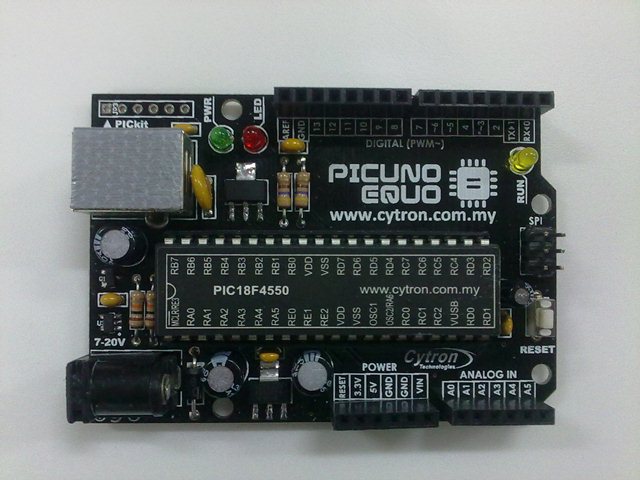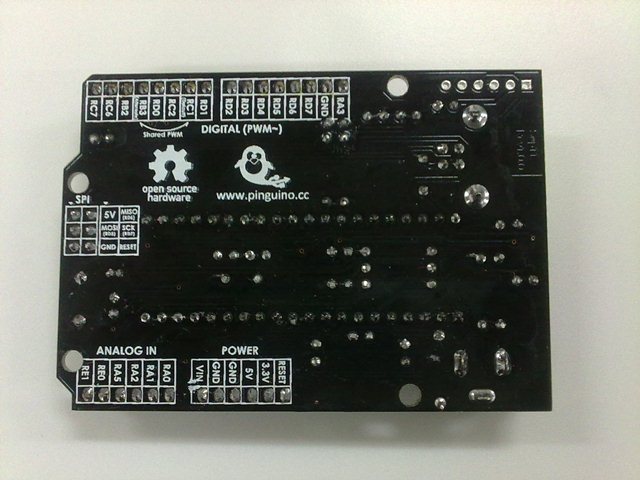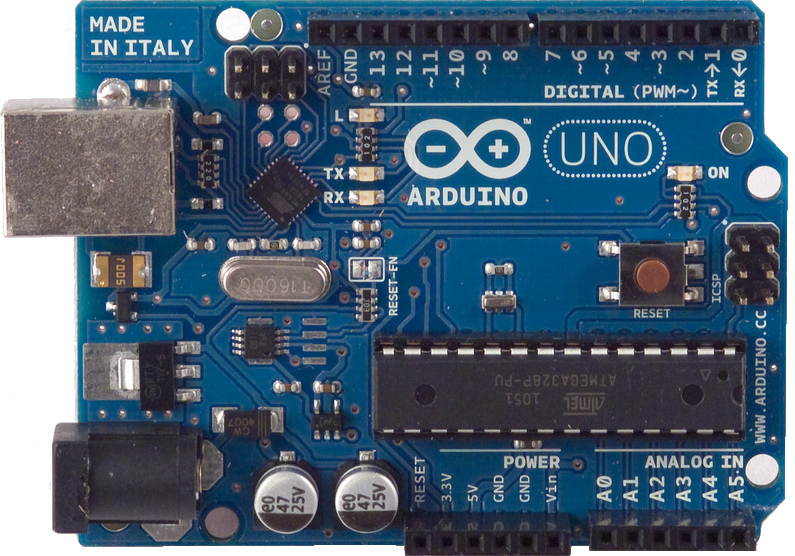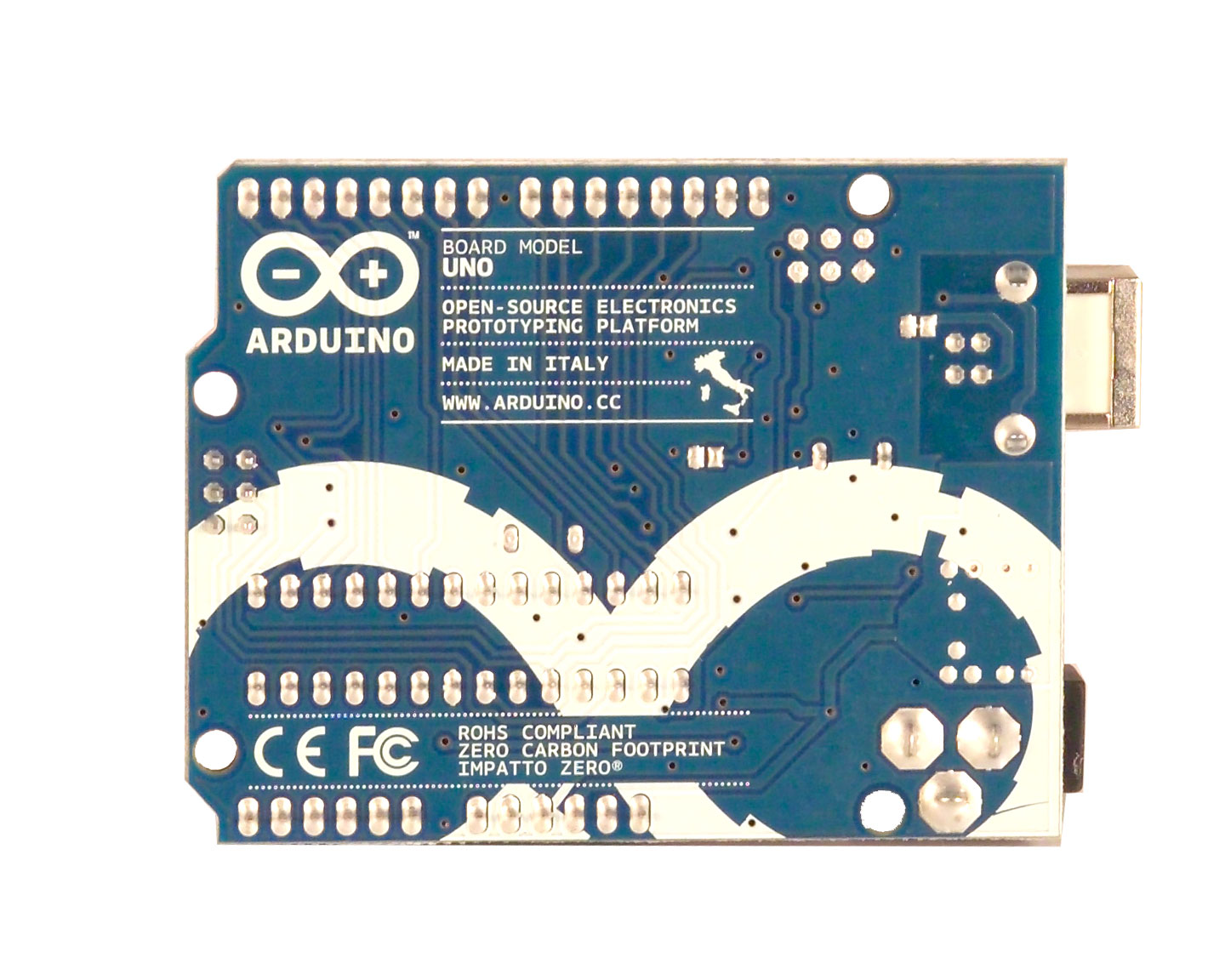

Source: shahrulnizam.com
Arduino Uno


Source: arduino.cc
Specifications
-----------------------------------PICuno Equo (PIC18F4550)--------------Arduino Uno (ATMega 328p)---------------------
Flash Memory---------------------------32 Kb-----------------------------------------------32 Kb---------------------------------------
RAM---------------------------------------2 Kb------------------------------------------------2 Kb---------------------------------------
EEPROM Data-------------------------256 Bytes------------------------------------------1024 Bytes-----------------------------------
UART---------------------------------------1----------------------------------------------------1-----------------------------------------
SPI------------------------------------------1----------------------------------------------------2-----------------------------------------
I2C/TWI------------------------------------1---------------------------------------------------1------------------------------------------
Timers-------------------------------------4----------------------------------------------------3------------------------------------------
ADC Channels-----------------------------13---------------------------------------------------8-----------------------------------------
ADC Resolution-------------------------10 bits---------------------------------------------10 bits--------------------------------------
Comparators-------------------------------2----------------------------------------------------1-----------------------------------------
USB Interface-----------------------Yes, USB 2.0------------------No, connected to external ATMega 8U2 chip, USB 2.0--------
PWM Channels-----------------------------3----------------------------------------------------6-----------------------------------------
According to the comparison between both microcontroller/prototyping platform above, the Arduino Uno has more EEPROM data, SPI Interface and PWM channels than the PICuno Equo. On the other hand, the PICuno Equo has more timers, ADC channels and comparators than the Arduino Uno. Besides, the PICuno Equo also has a built-in USB interface in the microcontroller (PIC18F4550) while the Arduino Uno has an external ATMega 8U2 chip connected to the microcontroller (ATMega 328p) to channel serial communication over USB and appears as a virtual com port to software on the computer. This gives a benefit to the PICuno Equo as we can make it ourselves without the need to solder a SMD FTDI chip which really need skills to do that. Cytron may just sell the PICuno Equo PCB and all the components in a pack and we'll just solder it ourselves at a lower price + FUN! I'd suggest Cytron to just sell the PICuno Equo board without the microcontroller (PIC18F4550) as some people have the microcontroller somewhere around the corner at home. It is also said that the PICuno Equo has more execution speed as its preprocessor translates specific instructions of the Arduino language to native C instructions for PIC before the compilation.(refer--http://tutorial.cytron.com.my/2011/08/20/pinguino/) This can also be done on the Arduino Uno with Arduino Port Manipulation (refer-- http://tronixstuff.wordpress.com/2011/10/22/tutorial-arduino-port-manipulation/) but it will need more work on the programming. As for the programming, both language are the same but the PICuno Equo uses the Pinguino IDE while the the Arduino Uno the Arduino IDE. The PICuno Equo can work on the PIC18F4550(recommended) and the PIC18F2550 while the Arduino Uno on the ATMega 328 (recommended), 168 and 8. For the price of a PICuno Equo's microcontroller (PIC18F4550) compared to the price of an Arduino Uno's microcontroller (ATMega 328p),the PIC18F4550 is slightly more expensive than the ATMega 328p. So if you get your chips fried, you'll need to spend more money on the PICuno Equo. However, the Arduino Uno's microcontroller (ATMega 328p) is connected to a ATMega 8U2 chip while the PIC18F4550 doesn't (it has an internal USB interface). So if you somehow get your ATMega 8U2 chip fried, you'll need to get a new Arduino Uno that costs way more than spending on a fried PIC18F4550. The PICuno Equo would be a good start for beginners on the Arduino platform. Hope this help you guys to know more about the PICuno Equo and the Arduino Uno! (This is unofficial! )
Hoping to get one of those beta versions of the PICuno Equo from Cytron
Please do correct me if anything is wrong.




